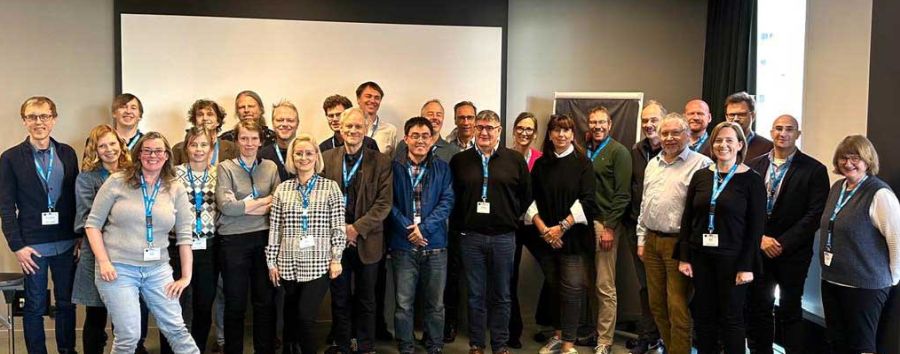HiAOOS at the Nordunet workshop in Oslo

In beginning of October, Stein Sandven, Yiguo Wang, and Hanne Sagen from HiAOOS/NERSC participated in a workshop organised by NorduNet in Oslo. The workshop, entitled “Science Opportunities on Polar Connect”, was co-funded by the Northern EU Gateway project. The missions of the workshop were to inform and discuss the science opportunities offered by a future SMART cable crossing the Arctic Basin, and to discuss the scientific needs for observations in the Arctic Ocean. More than 30 scientists, engineers, and funders participated at the workshop. Participants were primarily from Norway, but also from Canada and Europe. Hanne from HiAOOS and the newly funded project AOOS took part in the organisation of the workshop.
SMART cables are communication cables with sensors integrated into repeaters every 70 km or so. An example of a trans-Arctic cable is shown in Figure 1. Communication cables can also be used as sensors themselves through Digital Acoustic Sensing. However, both of these technologies are limited to observations of the sea floor where the cable is laid. One topic for the conference was to discuss how the cable can serve the different scientific areas in polar research such as ocean sciences, geology, geophysics and biology.

Stein Sandven** gave a presentation about the evolving ocean observing systems in the Arctic with emphasis on HiAOOS. He addressed how HiAOOS systems could benefit from connection to a communication cable and vice versa how mooring networks would complement a cable system. Yiguo Wang described how climate monitoring could benefit from a cabled system and he pinpointed the importance of sustained observing capacity.
The conclusion from the workshop is that a Polar Connect will benefit several research areas with observations in real time. However, there is a need for a wider range of observations from Smart Cable infrastructure, and it was emphasised that the cable does not cover the water column nor the sea ice. Therefore, the cable must be in integration with platforms that covers the water column e.g., oceanographic moorings, buoys and floats. This would for example be moored super-sites connected to the cable through cable branches and messenger vehicles to commute with data and power between docking stations at super-sites and and at the communication cable. In the INTAROS roadmap it is recommended to combine subsea cables with a fixed network of ocean moorings with acoustic sources and receivers in the Arctic, an underwater GPS system can be built to support navigation and communication with moving underwater platforms, as well as acoustic tomography for ocean heat content.
Furthermore, it is important that the new mooring technology is developed so that it can integrate with messenger vehicles and future cable system. A contribution to this is the new mooring technology under development at NAXYS, Stinger, AWI and IOPAN in HiAOOS.
*Figure was presented by Bruce Howe and Bjørn Rønning at the Arctic Science Summit Week, 2022. The figure is based on J. Orcutt’s figure in Mikhalevsky et al. 2015 and in Baggeroer, A. B., et al. 2018.
**Sandven, Sagen et al. 2022 Deliverable 1.10. Roadmap for a sustainable Arctic Observing System.
Cover photo: Photo of the workshop participants from the “Science Opportunities on Polar Connect.”